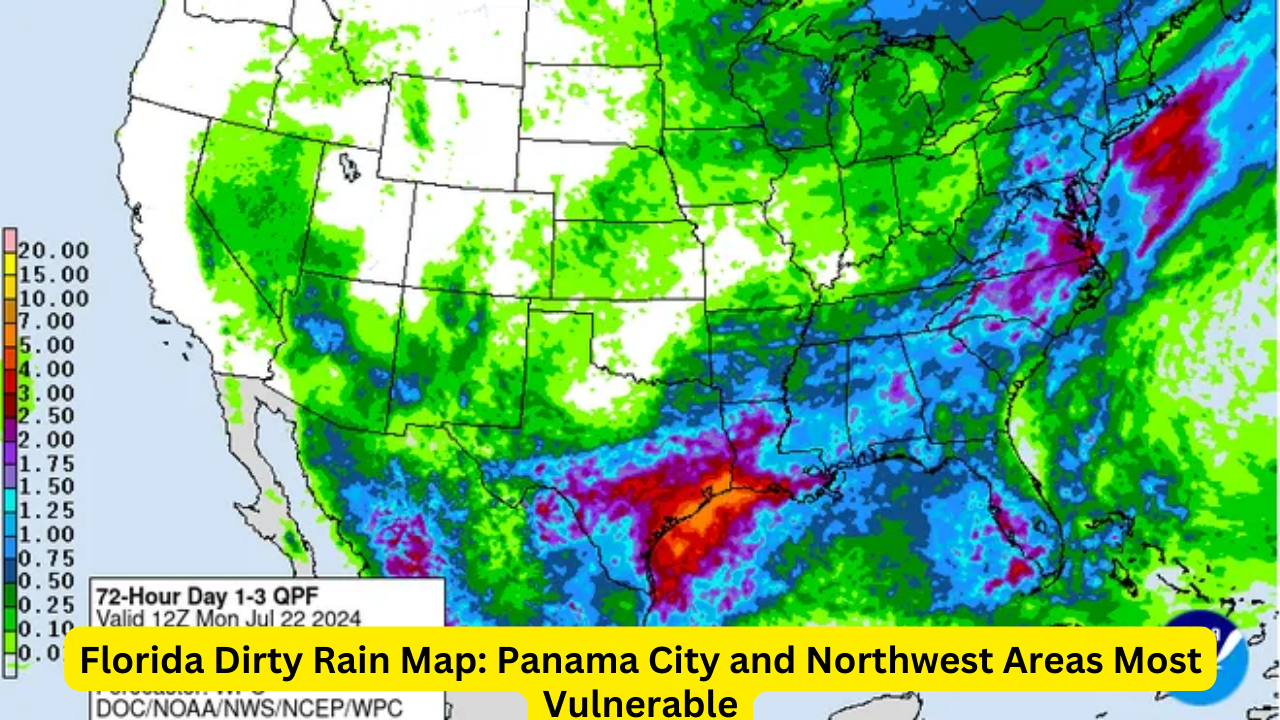Introduction
The Florida dirty rain map has recently highlighted significant weather concerns for residents of Panama City and the northwest regions of the state. With an expected 2-3 inches of rainfall, these areas are particularly vulnerable to the effects of dirty rain. This article examines the phenomenon of dirty rain, its causes, and its potential impact on the affected regions.
Understanding Dirty Rain
1. What is Dirty Rain?
Dirty rain occurs when raindrops capture pollutants such as dust, soot, and other airborne particles as they fall from the atmosphere. This results in rainwater that contains higher levels of contaminants, which can affect both the environment and public health.
2. Causes of Dirty Rain
Dirty rain is typically caused by a combination of atmospheric conditions and human activities. Factors include:
-
Industrial Emissions: Factories and power plants release pollutants into the air.
-
Wildfires: Smoke and ash from wildfires can travel long distances and mix with rain.
-
Dust Storms: Dust particles from arid regions can be carried by winds and incorporated into rain clouds.
Impact on Panama City and Northwest Florida
1. Increased Rainfall
According to the Florida dirty rain map, Panama City and the northwest areas are expected to receive 2-3 inches of rainfall. This increased precipitation can exacerbate the effects of dirty rain, leading to more significant contamination of water sources and the environment.
2. Vulnerable Areas
The map indicates that Panama City and surrounding northwest regions are particularly vulnerable due to their geography and weather patterns. These areas may experience higher levels of pollutants in the rainwater, affecting local ecosystems and infrastructure.
Health and Environmental Concerns
1. Water Contamination
One of the primary concerns associated with dirty rain is water contamination. Pollutants in the rain can infiltrate rivers, lakes, and groundwater sources, posing risks to drinking water supplies and aquatic life.
2. Soil and Plant Health
Dirty rain can also impact soil quality and plant health. Contaminants can alter soil composition, affecting nutrient availability and potentially harming crops and vegetation.
3. Public Health Risks
Exposure to pollutants in dirty rain can have adverse effects on human health. Potential risks include respiratory issues, skin irritation, and other health problems, particularly for vulnerable populations such as children, the elderly, and individuals with preexisting health conditions.
Preventive Measures and Recommendations
1. Monitoring and Alerts
Residents in Panama City and northwest Florida should stay informed about weather conditions and potential dirty rain events. Local authorities and weather services provide alerts and updates to help communities prepare and respond effectively.
2. Protecting Water Sources
To mitigate the impact of dirty rain, it is essential to protect local water sources. Measures include regular water quality testing, using filtration systems, and implementing conservation practices to reduce pollutant runoff.
3. Health Precautions
Individuals can take several precautions to minimize exposure to pollutants in dirty rain, such as:
-
Staying Indoors: During heavy rain, staying indoors can reduce direct exposure to contaminants.
-
Using Protective Gear: When going outside, wearing protective clothing and using umbrellas can help limit contact with dirty rain.
-
Avoiding Contaminated Water: Refrain from using or consuming water that may be contaminated until it has been tested and deemed safe.
Conclusion
The Florida dirty rain map underscores the potential risks and challenges facing Panama City and the northwest areas of the state. Understanding the causes and impacts of dirty rain is crucial for residents and authorities to take appropriate measures to protect public health and the environment. By staying informed and implementing preventive strategies, communities can better navigate the challenges posed by this weather phenomenon.
